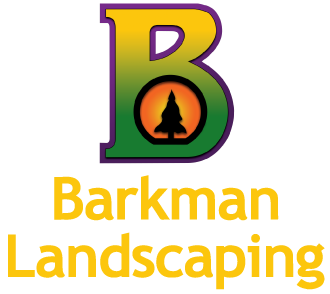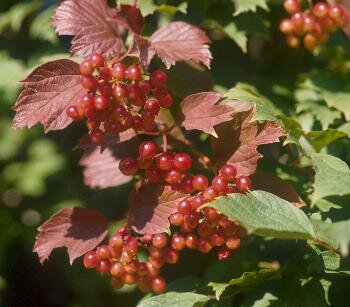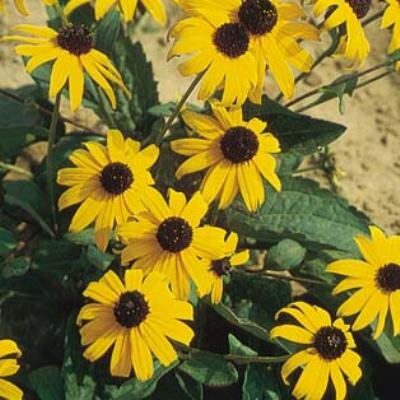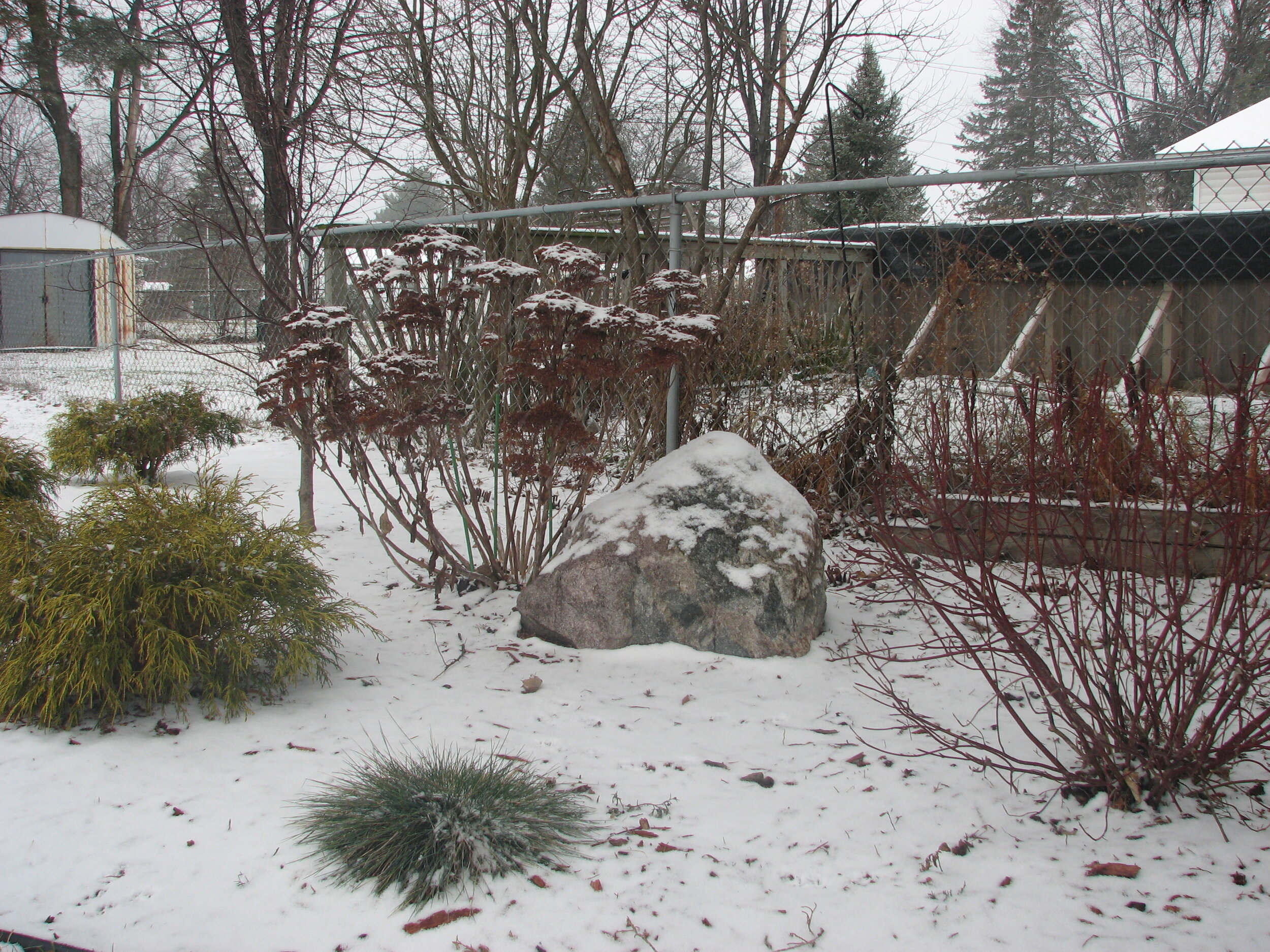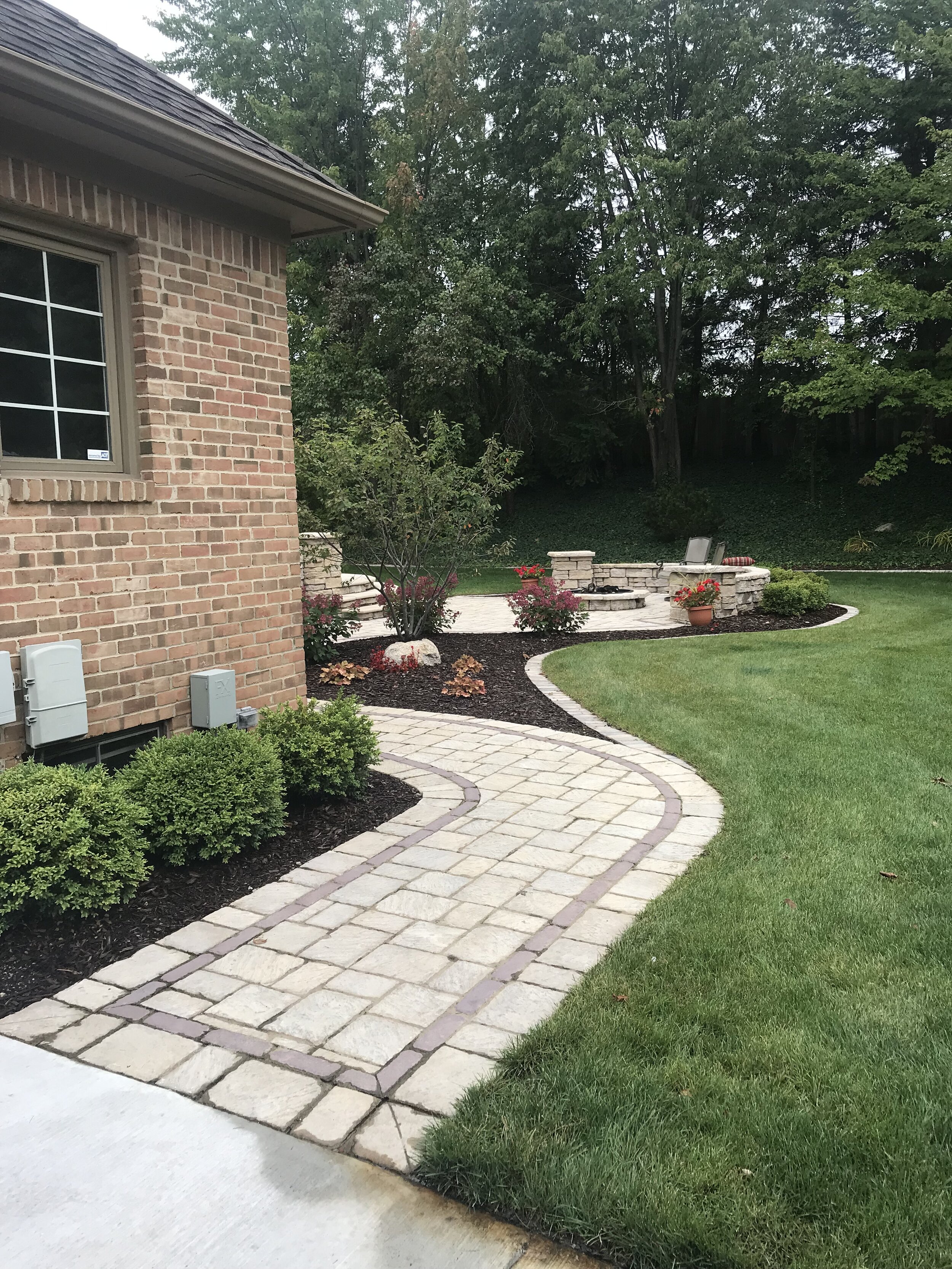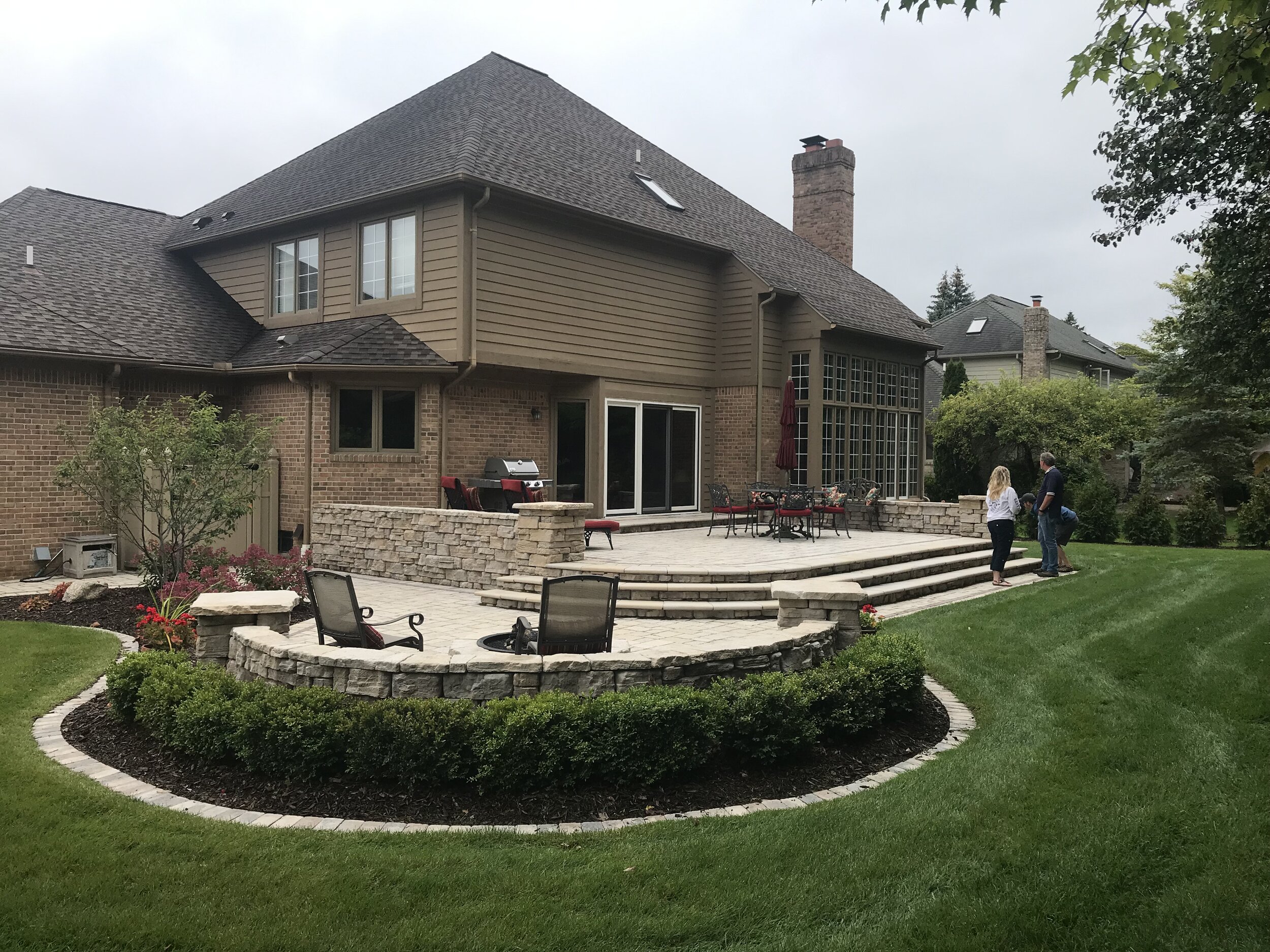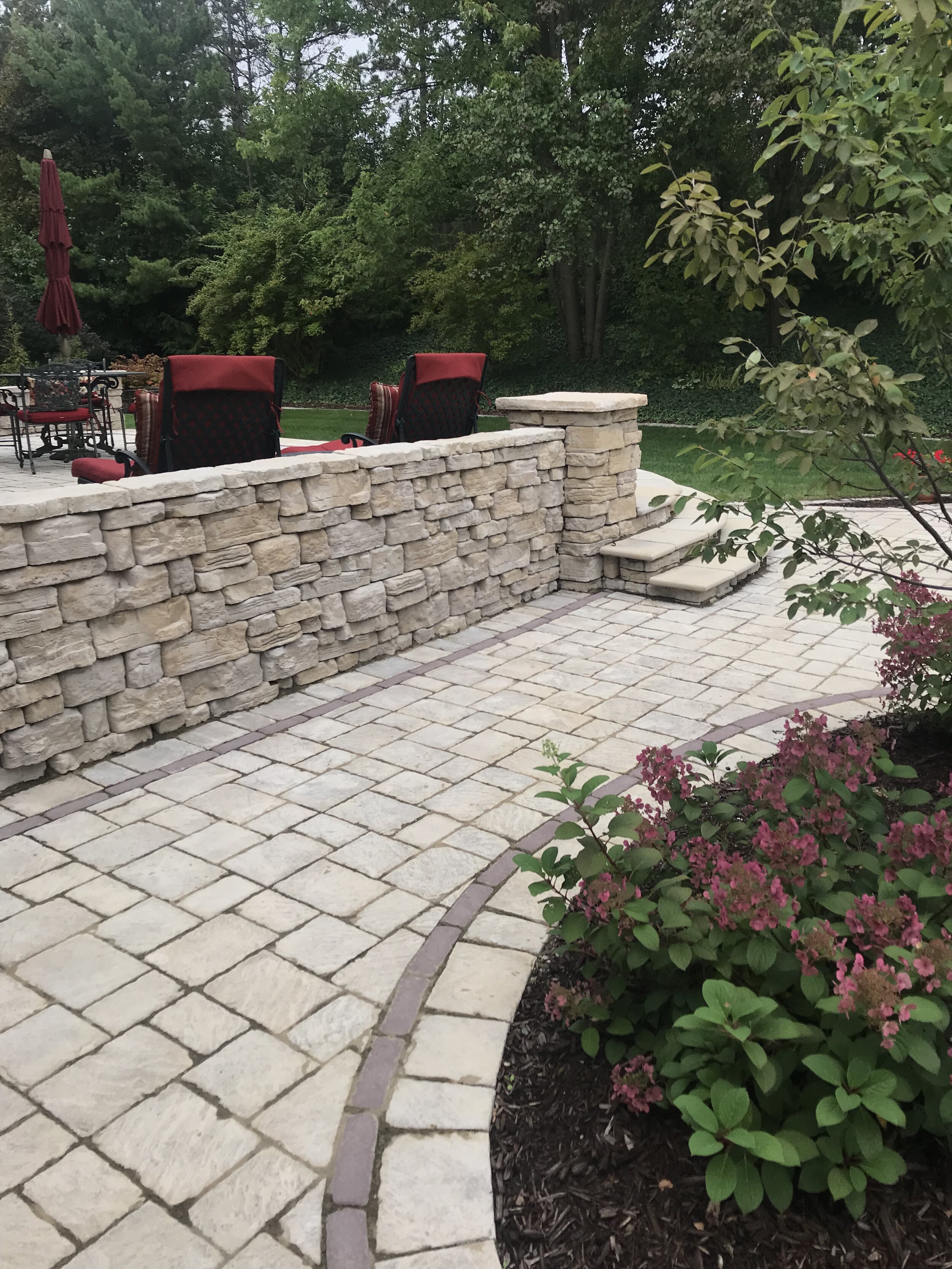Education and constantly growing our knowledge base has always been a cornerstone of our mission. Over the course of the past year, we have had ten staff members pursue further industry education. The certifications they chose are nothing short of rigorous, each equivalent to a college-level course. 5 people have received or are in the final stages of their Class-A Commercial Driver Licenses (CDL), 2 are finishing up their Certified Pesticide Applicator’s Licenses, 4 obtained their Interlocking Concrete Paver Institute (ICPI) Installer Certification, and 9 spent nearly a year studying and testing for their Certified Green Industry Professional (CGIP) Certification through the Michigan Nursery and Landscape Association. We’re proud of their accomplishments and grateful to be a part of furthering the careers of these incredible people- Congratulations to Rob, Joshua, Mike, Stacy, Jordan, Russell, Chelsea, Jerry, Evalyn and Chans!
Favorite Fall Perennial
Just because summer is coming to a close doesn’t mean that our landscape has to fade away with it. Yes, of course, many of our summer perennials will have flowered and faded by September but keep in mind the humble Diervilla, specifically the Kodiak Orange Diervilla.
So what is that?
Kodiak Orange Diervilla, more commonly referred to as a bush honeysuckle, is a plant that will thrive in sun or shade, is drought-tolerant, deer resistant and native to Michigan. All of these reasons are why we’ve been particularly enjoying the Kodiak Orange Diervilla and adding it to our landscapes all season long.
Another great seasonally relevant feature, the Diervilla has excellent fall color. Its glowing orange fall foliage lights up any landscape. In early summer, bright yellow flowers add to the appeal not only within the landscape but to attract beneficial pollinators such as butterflies and hummingbirds. At only 3-4’ tall and wide this easygoing shrub will grow just about anywhere in your landscape.
Common Hydrangea Issues
Hydrangeas, nowadays it seems most landscapes are bound to have at least one. These versatile flowering shrubs come in a wide array of sizes, colors and flower shapes so it’s easy to see why so many people love them.
Over the course of the summer we have taken calls from various homeowners asking, “what’s wrong with my hydrangeas and how do I fix it”. The good news is that so many of these problems easily diagnosed and easily solved with a few simple steps, getting your hydrangeas back to looking their best. Here are three of the more common issues we see with hydrangeas.
1. Brown Spots on Hydrangea Leaves
In a home landscape, brown spots on the leaves are usually caused by a fungus or bacteria. The two most common types of fungus are called cercospora leaf spot and anthracnose . In most cases, the fungus or bacteria doesn’t threaten the life of the plant, but the spots can be unattractive. These spots usually appear annually toward the end of the summer and fall. The following spring, the leaves emerge unaffected, and the spots from the previous year do not affect the plant’s ability to bloom.
To treat these brown spots fungicides can be applied, but most home gardeners do not feel this is a worthwhile option. You can help control brown spot by keeping the ground under the hydrangea free from leaf debris and by occasionally cutting off the old stems to allow air to circulate through the plant. Also, if your hydrangea has bloomed heavily during the summer, removing the dried blooms that are lying on the leaves may help to increase air circulation to the plant.
2. Hydrangea Leaves Turning Yellow
During the growing season, spring and summer, if hydrangea leaves unexpectedly turn yellow and then brown and begin to fall off, a problem with the roots is usually the cause. This most often occurs before the plant has had time to establish a deep, strong root system usually when the hydrangea is newly planted. A few leading causes of yellow leaves are the following.
1. The plant has become too dry
2. The plant has been kept too wet
3. The plant has received too much fertilizer
Each of these issues can cause a part or all of the root system to die. When the roots are damaged the leaves will wilt and then may turn yellow and then brown. In addition to these symptoms, keeping the plant too wet can lead to root rot and even death.
To treat yellow leaves, first look to see if the plant has been allowed to dry out, the first step to recovery is to thoroughly water the entire root ball. At this point, your instinct might be to continue watering the plant to excess. However, it must be remembered that the roots are damaged, and they will be unable to deal with soil that it is too wet. So, allow time between each watering for the soil to dry out slightly and for the roots to regenerate.
3. Hydrangea Leaves Drooping
This very common summertime problem is typically caused on a warm summer day when the sun has been up all afternoon. You come home and the leaves of your hydrangea look as though they have wilted to the ground. Even though we are entering a cooler season this is an easily solved problem to keep in mind for next summer.
Droopy hydrangea leaves are a clear signal that your plant has not had enough water. To treat just give your hydrangea a nice long drink and they will revive within the hour.
Winter Plants for Bird Watchers
We live in Michigan and even though we are normalized to winters woes, there are those days that we just have to give up on the cold and stay inside. Think of how nice it would be while lounging by the fireside or reading your favorite book, to look outside and catch a glimpse of a bright Red Cardinal, or maybe a Black Capped Chickadee. Building a habitat that will sustain birds throughout the winter months is the first step on your way to winter bird watching.
If you are using feeders to attract your feathered friends, try placing them in an area that provides a good shelter away from winter winds. Spruce and Pine plantings are excellent for creating a safe haven for feeding.
Providing winter foods is also essential to attracting differing bird species. Viburnums are a wonderful plant to add to your birding sanctuary. There are many varieties that not only offer spring and summer blooms they provide fruits that will nourish bird species of all kinds.
Perennials are also a wonderful way to provide food for your winter birding garden. Black-Eyed Susan and Sedum left up during the winter not only add interest and texture to your landscape, they provide plenty of seed for many Michigan birds.
There are a number of plants that can be planted in your landscape to add food and shelter for a long winter season of bird watching. Consider your options for attracting birds to your garden. Give us a call to start planning your Spring 2020 landscape today.
Why wait? Start planning today!
CALL US NOW TO PLAN FOR TOMORROW
Do you have a big event coming up in your near future? Maybe you have a son or daughter that is getting ready to graduate or you have a wedding on the horizon. Have you thought about putting on that big bash at home? Well if the answer is yes, now is the time to plan for your outdoor extravaganza. Just think about it, having an outdoor event at your home is a big undertaking, it requires planning and lots of time and effort. Let Barkman Landscaping help you get started by creating the perfect spot to enjoy your gathering. We can help you create an area that is perfect for any sized party you have planned. We can even help you come up with the perfect natural décor to create that special ambiance. Give us a call now and let us help you get a head start, you will be glad you did.
